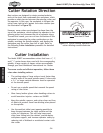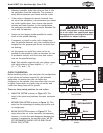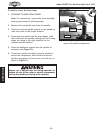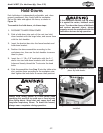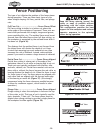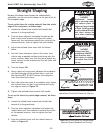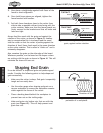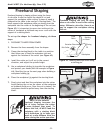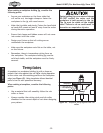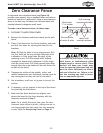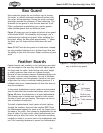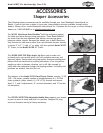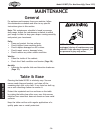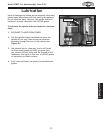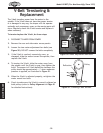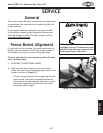
-32-
Df[\cN(/).=fiDXZ_`e\jD]^%J`eZ\*&()
FG<I8K@FEJ
N_\edXb`e^Xnfibg`\Z\_fc[`e^a`^#Zfej`[\ik_\
]fccfn`e^gf`ekj1
• Secure your workpiece on the three sides that
will not be cut; use toggle clamps or fasten the
workpiece to the jig with wood screws.
• Make the jig stable and sturdy. Fasten the hand holds
so hands will remain at least 6" away from the cutter
during the entire operation.
• Ensure that clamps and hidden screws will not come
into contact with the cutter.
• Design your fixture so that all cutting occurs
underneath the workpiece.
• Make sure the workpiece rests flat on the table, not
on the fixture.
• Remember, there is tremendous cutting force on
the workpiece. The workpiece holding jig must be
solid and stable, and the workpiece must be firmly
secured.
;\j`^e_fc[`e^a`^jjfjZi\njXe[ZcXdgj
;F EFK ZfekXZk k_\ Zlkk\i Xe[ k_\
nfibg`\Z\ `j _\c[ j\Zli\cp kf k_\ a`^%
K_\ a`^ dljk Y\ jkXYc\ fe k_\ j_Xg\i
kXYc\% =X`cli\ kf [f jf Zflc[ i\jlck`e
cXZ\iXk`fefiXdglkXk`fe`eali`\j%
K\ dgc X k \ j
A template is a workpiece holding jig with a shape or
pattern that rides against the rub collar during operation
as the cutter cuts the matching profile on the workpiece
edge (see =`^li\+,). Using templates allows identical
parts to be cut with speed and accuracy.
N_\edXb`e^Xk\dgcXk\j#Zfej`[\ik_\]fccfn`e^
gf`ekj1
• Use a material that will smoothly follow the rub
collar or fence.
• Always consider the cutting circle and rub collar
diameter for the correct depth of cut when designing
your pattern.
K\dgcXk\
IlY:fccXi
Nfibg`\Z\
=`^li\+,% Template setup against the rub
collar.



